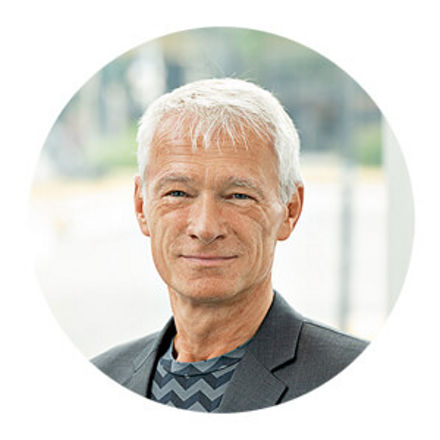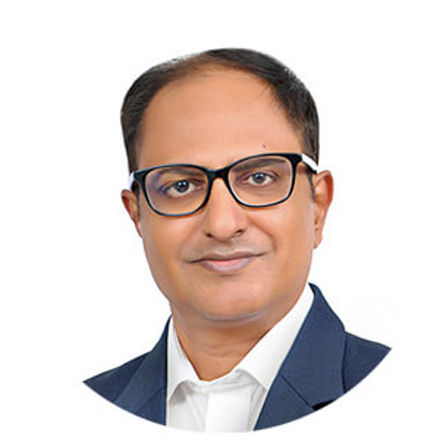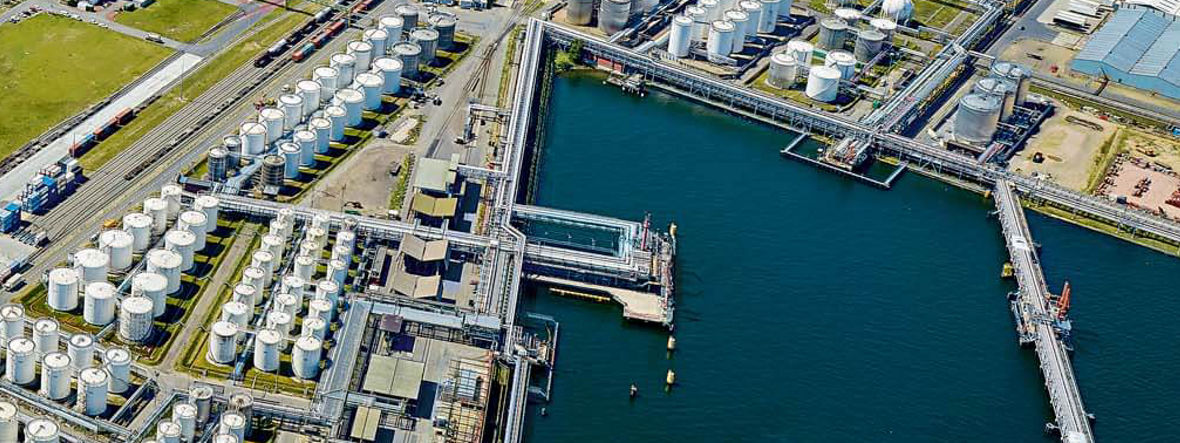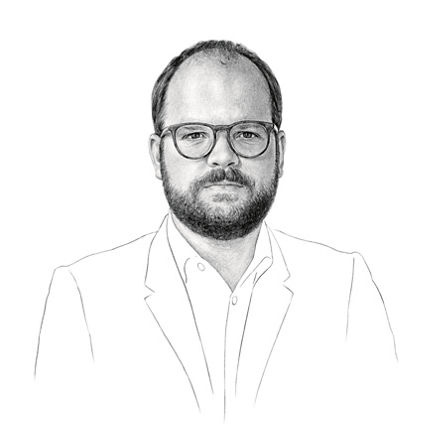Hot summers are stressful for Hannah Gerwing, who works for Evonik as an employee of the Logistics business line in Essen. That’s because she keeps an eye on water level forecasts for the Rhine, which boasts numerous chemical factories along its banks. If the river threatens to drop to critical levels, Gerwing calls together the Low Water Task Force. “Last year I had to do this virtually every week from June through September,” Gerwing says. Back then, the water shortage in the Rhine made headlines throughout Europe. As a result, cargo ships were only partially loaded or did not travel at all. Not only were raw materials and products left behind at Evonik or had to be transferred to road and rail, the low water level also threatened to cause difficulties for supplies and the cooling of production facilities. “If we don’t take countermeasures in time, production has to be curtailed,” Gerwing says.
TOO LITTLE WATER OR TOO MUCH?
Low water levels affect production facilities in many ways: “Without water, nothing works,” says Ulf Auerbach, who is responsible for water issues at Evonik. “We have to take this very seriously.” The company analyzes the water situation at its sites worldwide in detail and has used the findings to forecast how it will change by 2030 and 2040, respectively. The results show that a quarter of all sites are threatened by water shortages.
“Shortage is only one of our problems. Elsewhere, floods are the greater risk, as are political and social conditions,” says Aurelie Wojciechowski, who works in the Sustainability Strategy unit at Evonik. To assess all this, Evonik plans to use the WWF’s Water Risk Filter in the future, a methodology that takes into account many other local factors in addition to impending scarcity. “Unlike CO₂, water is a variable that has a local impact and has to be evaluated in a very differentiated way from place to place,” Wojciechowski says.
EVERY LITER IS USED SIX TIMES
Chemistry needs water—lots of water. It is needed for chemical reactions, as a thinner and solvent, for washing and cleaning, and especially for cooling. According to the World Bank, of the approximately 3.9 trillion cubic meters of freshwater withdrawn globally each year, an average of 15 percent is used for industrial purposes. And the chemical industry is the thirstiest industry after the energy supply sector. In Germany, for example, it is the largest consumer of water in the manufacturing sector. According to the Federal Statistical Office, the German chemical industry uses around 2.6 billion cubic meters of water per year.
The good news is that chemical companies in Germany have largely been able to decouple their water needs from growth over the past three decades. Between 1991 and 2016, for example, the industry’s water abstraction fell by almost 40 percent, while production grew strongly at the same time. This is due to a major rethink. According to the German Chemical Industry Association (VCI), the industry today uses every liter of water almost six times before it is purified and released into the environment.

»Without water, nothing works. We have to take this very seriously«
Ulf Auerbach SENIOR EXPERT ENERGY & CLIMATE AT EVONIK
Evonik too uses the principles of the circular economy when it comes to water. Globally, the company abstracted around 446 million cubic meters of water in 2022, just over half of it freshwater (see the chart on pages 30–31). Although the volumes of water used throughout Evonik are far greater, most of it circulates in closed systems and does not need to be constantly renewed.
At the same time, the company is constantly working to reduce specific water withdrawal—i.e. the amount of water per ton of product produced. The new water management strategy aims to reduce freshwater consumption by another three percent by 2030. Where appropriate, saltwater is used instead of freshwater. For example, Evonik cools its methionine production in Singapore entirely with seawater. This is possible because the city-state’s administration treats this important resource and the Evonik plant was built with particularly corrosion-resistant materials. Thus, each site must find a solution that’s appropriate to local conditions, says Auerbach.
However, one rule applies worldwide: “Energy and water consumption are very closely related because about 90 percent of our water use is for cooling,” Auerbach says. Wherever waste heat is used to save energy, less cooling water is needed in one place and less steam for heating in another. As part of a global technology program, Evonik is currently investing up to €700 million in improving energy efficiency at locations around the world in order to reduce CO₂ emissions. If this also reduces the water requirement, the investment is all the more worthwhile. In order to raise awareness of this further, Evonik is developing its own water policy, which encompasses group-wide instructions and also includes customers and suppliers. “Water is actually too cheap, but the risks aren’t,” says Wojciechowski. “All over the world, we have to take into account the specific locally threatening scenarios so that we can then quickly take correct countermeasures if necessary.”
Antwerp
COOLING WITH WASTEWATER
COUNTRY: Belgium
LOCATION: 51° 18’ N, 4° 18’ O
CLIMATE: warm temperate
AVERAGE TEMPERATURE: 11 °C
ANNUAL PRECIPITATION: 816 mm
DAYS OF RAIN: 120
Water is never far away: Evonik’s large production site in Antwerp, Belgium, is squeezed onto a narrow strip of land between a canal and the Scheldt River, which widens to a width of one kilometer or more behind Europe’s second-largest seaport before flowing into the North Sea. Nevertheless, the people in charge of the site have been scratching their heads for a long time about how the water supply will continue in the long term. That’s because Evonik’s plants need a lot of liquid for cooling, steam, and processes.
Because the tides mix saltwater and freshwater in the Scheldt to a brackish mixture, it is not usable for all purposes. Even the water from the somewhat less salty canal cannot be used indefinitely. “For a long time we were able to cover our cooling needs by using the canal water for once-through cooling,” explains Dirk Goossens, Sustainability Coordinator at the site. However, the construction of two large plants some years ago caused the site to reach its limits. “Especially in summer, we cannot and must not release unlimited amounts of heat into the canal,” says Goossens. The ecological balance would be disturbed if the water were to get too warm. Evonik therefore cools all new plants with cooling towers that circulate water and release heat into the air. “But we need very clean freshwater for this,” says Jorn Walscharts, the energy and wastewater operations manager at the site. Around 1.4 million cubic meters must be fed in each year in order to compensate for the evaporated amounts and prevent calcification of the system over the long term. At present, this water still comes from the public drinking water network, but things will soon change. “The idea is to treat municipal wastewater from the city of Antwerp so that we can use it directly for cooling,” says Walscharts.
In cooperation with several technology companies, Antwerp’s municipal water utility is planning to set up a kind of cooling water factory on the site of a former Opel plant. In the future, the new facility will treat the wastewater from 600,000 households—around 20 million cubic meters per year. “The water has already passed through the normal treatment plant and would currently be discharged into the river,” Walscharts explains. Instead, it will be pressed through a special membrane once again in a process known as reverse osmosis, thus removing the remaining impurities and salts. “The result is recycled water that contains less salt than drinking water,” Walscharts says. “That’s a big advantage for us.”
In Antwerp, Evonik will thus no longer need valuable drinking water for cooling or for steam generation and chemical processes—in total around 2.5 million cubic meters per year. It also reduces the workload for the site’s desalination plants. “This reduces our water needs by a further ten percent and also lets us dispense with additional chemicals,” says Goossens. The facility is scheduled to go into operation in three years.

Map Ta Phut
SAVING WATER WITH FILTER TECHNOLOGY
COUNTRY: Thailand
LOCATION: 12° 42’ N, 101° 6’ E
CLIMATE: tropical
AVERAGE TEMPERATURE: 27.2 °C
ANNUAL PRECIPITATION: 1.807 mm
DAYS OF RAIN: 155
Thailand is used to extreme weather. In fact, the entire country depends on water being held back in reservoirs during the rainy season to prevent flooding. In the dry season, these reservoirs then enable a secure supply of water and electricity generated by means of hydropower. “Proper management of these reservoirs is extremely important, but is complicated by climate change,” says Surasak Photia, who heads Evonik’s site in Map Ta Phut. Here, the Silica business line produces precipitated silica, which is used in products ranging from car tires to toothpaste. The production process requires a lot of water. The product is precipitated from the liquid as a white powder and then separated and dried in filter presses. “Depending on how you conduct this process, a lot of water can be saved,” Photia explains. His technicians proved this in 2020, when water once again became a major political issue in Thailand following a number of extreme weather incidents. Without any investment, the site was able to reduce water demand by ten percent by changing filter settings.

UMBOGINTWINI
OSMOSIS INSTEAD OF DISTILLATION
COUNTRY: SOUTH AFRICA
LOCATION: 30° 0’ S, 30° 54’ E
CLIMATE: warm temperate
AVERAGE TEMPERATURE: 20.5 °C
ANNUAL PRECIPITATION: 887 mm
DAYS OF RAIN: 89
The Umbogintwini Industrial Complex owes its name to the nearby Mbokodweni river and is located slightly more than one kilometer from the Indian Ocean. Accordingly, there should be water in abundance. Nonetheless, the people at this chemical park are concerned. The park, where Evonik produces hydrogen peroxide, is located south of the South African megacity of Durban. Extreme weather conditions are on the rise. The site has been identified as a moderately water-scarce site. “We save water in keeping with our sustainability due diligence and to reduce the impact on our environment,” says Surie Govender, the Sustainability ambassador at the location. “Every drop helps.” The measures are manifold. For example, currently collected rainwater is supplied to the changeroom sanitary facilities. In the future, this will be extended to the warehouse for use in the cleaning of returned drums. But the plans in Umbogintwini go even further: In the future, cooling water could be treated and used in production and logistics. And instead of purifying the hydrogen peroxide by means of distillation, it’s also possible to use reverse osmosis, which our project team is working on. This would save steam energy, cooling requirements, and thus water.

Wesseling
RELIEF FOR THE RIVER
COUNTRY: Germany
LOCATION: 52° 48’ N, 7° 18’ E
CLIMATE: warm temperate
AVERAGE TEMPERATURE: 10.7 °C
ANNUAL PRECIPITATION: 847 mm
DAYS OF RAIN: 115
In Wesseling, two state-of-the-art cooling towers ensure that silica production can run without seasonal interruption. After the treated wastewater has been used to rinse filter presses it is cooled in a particularly energy-efficient manner. The Rhine benefits from the lower discharge temperature.

Marl
COOLING WATER CIRCUIT
COUNTRY: Germany
LOCATION: 52° 48’ N, 7° 18’ E
CLIMATE: warm temperate
AVERAGE TEMPERATURE: 10.6 °C
ANNUAL PRECIPITATION: 884 mm
DAYS OF RAIN: 197
The Marl Chemical Park uses around 600 million cubic meters of water per year. Nevertheless, the site here on the northern edge of the Ruhr region is considered “dry.” For one thing, the chemical park is not located on any major river, as the Rhine is more than 20 kilometers distant as the crow flies. The site’s thirst for water could never be quenched by the tranquil Lippe River, which meanders past to the north of the site, and the Wesel-Datteln Canal right next to the industrial site.
Covering six square kilometers (three times the area of Monaco), the Marl Chemical Park is home to three power plants and around 100 production facilities operated by more than 20 companies. Water is in demand practically everywhere—as process water, fire-fighting water, washing water or drinking water, but above all as a means of cooling and generating steam. Over the decades, it has been possible to largely decouple the demand from the surrounding waters. Instead of using river water for once-through cooling, water is now circulated in recooling systems.
A total of around 80 such cooling cells are spread across 18 recooling plants distributed throughout the chemical park. In these cells, water is trickled onto evaporative bodies while a large fan pulls air through the system from above. In this way, the warm water releases evaporation energy into the air. The water, which has been cooled to a target temperature of 20 degrees, is piped to customers in the park, who use it to cool their processes and then return it warmed by a maximum of ten degrees Celsius. Only from one to one and a half percent of the cooling water evaporates in the recooling system and has to be replaced with treated water from the Wesel-Datteln Canal.
In the future, this demand is expected to decrease further. To achieve this, plants will use more of their waste heat themselves or transfer it to where process heat is needed. Hot water at up to 80 degrees Celsius flows from plant to plant in a dedicated waste heat network. “It’s more complex than the cooling cycle. We have to balance the feeders and consumers precisely with one another so that the system operates stably,” explains Johannes Offer, who is responsible for projects in the Utilities unit at Evonik. But the effort is worthwhile. Up to 60 megawatt hours can already be exchanged, which corresponds to the heating needs of about 6,000 single-family homes. Another 50 megawatt hours would be possible, Offer says. “We could save a corresponding amount—not only in energy, but also in water for cooling and for steam generation.”
For the renaturalized Lippe, a popular recreational area in the region, the inflow of water is as important as the abstraction. The Marl Chemical Park discharges around 15 million cubic meters of water a year—over three times as much as it withdraws. A large part comes from the Chemical Park’s own wells as well as from rainwater and groundwater. “Everything that rains on our plants and our land or passes through our soil has to be collected and treated in case it has been contaminated,” explains Jörg Gisselmann, who heads Evonik’s Marl environmental operations. The wastewater is treated by bacteria in a biological wastewater treatment plant. In large pools, the bacteria eliminate chemical compounds of carbon, nitrogen or phosphorus.
Evonik recently installed a Fenton plant to cope with the growing wastewater load as a result of expanding production capacities. This is used to pre-treat more polluted wastewater to make it “digestible” for the bacteria. What is special about this system is that hydrogen peroxide, which Evonik produces itself, can also be used to break down complex carbon compounds in an environmentally friendly way. The hydrogen peroxide itself is additionally activated by iron salts. It produces hydroxyl radicals, which break down organic constituents of wastewater. In this way, even wastewater that is difficult to purify can be treated biologically to keep the Lippe clean.

Mobile
SAVING WATER WITH FILTER TECHNOLOGY
COUNTRY: USA
LOCATION: 20° 30’ N, 88° 6’ W
CLIMATE: warm temperate
AVERAGE TEMPERATURE: 19.9 °C
ANNUAL PRECIPITATION: 1,396 mm
DAYS OF RAIN: 96
Roundhead bulrush (Scirpoides holoschoenus) and southern cattail (Typha domingensis) plants have an important job to do. These marsh plants grow in a basin filled with limestone gravel on the edge of Evonik’s Mobile location. “It was a real novelty in the early 2000s, when the basin was added to keep up with our growing production. Scientists at NASA had spent years working on the idea,” says Trey Laubenthal, who is responsible for all wastewater treatment at the location. Here in the US state of Alabama, the company relies on a wastewater treatment method that is particularly close to nature and handles around 4.5 million liters a day. Before being discharged into the nearby Theodore Industrial Canal, the water passes through several stages of treatment. The last stage is the so-called constructed wetland, a basin that is slightly larger than a soccer field. The plants in it form a dense network of roots with which they extract almost all the remaining carbon, nitrogen, and phosphorus compounds from the water. Otherwise these compounds could cause damage to the natural habitat of the canal. Meanwhile, in the basin the plants are thriving so well that they are swarming with insects, small animals, and snakes. “The water we’re discharging into the canal is a cleaner version than the canal water itself,” says Laubenthal. As a result, the Theodore Industrial Canal itself—a sort of cul-de-sac in Mobile Bay—is popular with amateur anglers, Laubenthal says. The only thing to watch out for are the alligators.

DOMBIVLI
PRODUCTS FROM PROCESS WATER
COUNTRY: India
LOCATION: 19° 12’ N, 73° 6’ O
CLIMATE: tropical
AVERAGE TEMPERATURE: 26,7 °C
ANNUAL PRECIPITATION: 1.439 mm
DAYS OF RAIN: 91
Suresh Pillai is the managing director of Evonik Catalysts India. In 2022 the company put a zero liquid discharge (ZLD) system into operation at its Dombivli location. The system purifies wastewater and transforms material previously classified as waste into a saleable product.

»The ZLD system enables us to reduce our fresh water consumption by around two thirds«
SURESH PILLAI MANAGING DIRECTOR OF EVONIK CATALYSTS INDIA
What does the zero liquid discharge system do?
We use our ZLD system to purify our process water. This is water that we have used to produce metal catalysts, for example. Our system treats about 550 to 600 cubic meters of wastewater per day. This is equivalent to 25 to 30 tanker truck loads. We can reuse more than half of this water directly in our production process. We use the rest as cooling water.
Why is this important?
For us and our customers, it is by no means just about ecology—this topic is an important growth driver for our business. This is where the ZLD system comes into play. It shows that we take this issue seriously. Specifically, it enables us to reduce our consumption of freshwater by around two thirds. In addition, the process produces about ten to 15 tons of sodium sulfate and certain mixed salts that can be sold as commercial products.
How widespread is the ZLD concept in India?
The idea of avoiding liquid waste is not entirely new. It is important, especially here in the state of Maharashtra, where summers are hot and dry and water is precious. But our project is also exemplary for other reasons. As far as I know, we are one of the first companies in this region to use ZLD not only for a selected process flow or plant section but for all the process water. In this way we’re demonstrating how systematic resource conservation can be implemented.


